Part 49: Part III: Final Fantasy XII and Final Fantasy IV
~Final Fantasy Extended Universes Part 3: Final Fantasy XII and Final Fantasy IV~Before we get started here, I want to talk about something that some people may be wondering during the first portion of this entry. Final Fantasy XII is part of a larger universe of games called the "Ivalice Alliance", which includes stuff like the Final Fantasy Tactics series and Vagrant Story. The reason I don't mention those in this update is because XII was added to the Ivalice Alliance, not the core of it. Unfortunately, Tactics is not represented here in WoFF (outside of references), so we're focusing solely on XII's EU here.
Not every Extended Universe turns out to be a horrible barn fire. Most of them do, but not always. Every so often Square will put out a diamond, or at the very least cubic zirconia.

Such was the case with Final Fantasy XII: Revenant Wings. Released for the DS in 2007, a year after XII, Revenent Wings follows Vaan and Penelo a year after the events of XII. There isn't much to say about the game itself, it was a solid experience and didn't really do anything to shit all over the world established in XII.
It was the kind of game that you wanted as a sequel (or at least the kind that I like), which is to say that it was the characters you had grown to know and/or love having further adventures. Vaan and Penelo trip other their own two feet while out treasure-hunting, stumble on an airship that takes them to a lost continent hidden in the clouds, meet a race of bird people, and then team up to help them save their land from assholes pirates (not the good kind like our heroes) and one asshole bird person. It was written and directed by Motomu Toriyama. This is Toriyama pre-XIII, although development had started on XIII already.
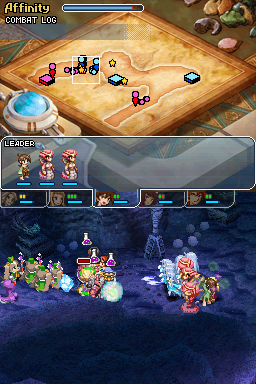
The gameplay was real time strategy and took inspiration from stuff like Age of Empires. It was also kept free of clutter and needlessly complicated systems, likely due to the fact that the game was aiming for new fans that didn't have experience with FF games. The North American release was bumped in difficulty a bit though, because the developers assumed that western fans were more familiar with RTS games. Based on the change in gameplay, there is some speculation that the game was originally planned to be something else, only to be morphed into a FFXII follow up for better name recognition. I can't find anything on the original development, but it honestly wouldn't surprise me if it was the case.
Either way, the game was enjoyable and didn't rock the boat the way that other EU material would. It was just a nice solid side game for fans to get some more XII.
That's not to say that XII's EU was without its share of problems. As we talked about in Part 2 with Final Fantasy X, Square can't leave things alone.
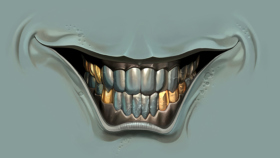
In 2008, Swedish developer Grin had been doing some concept work on a project called Fortress. Square was one of the companies they pitched the project to and they considered making the game a spin-off title of FFXII.
The original idea was for an action role-playing game set in a magic fortress (as well as some areas in the vicinity). The fortress was needed to fight off the king of the sea who rose every 10,000 years to try and invade the world, as it was the only thing capable of doing the job. The heroes would have to fight the king of the sea and his forces from the fortress and stop it from being overtaken.
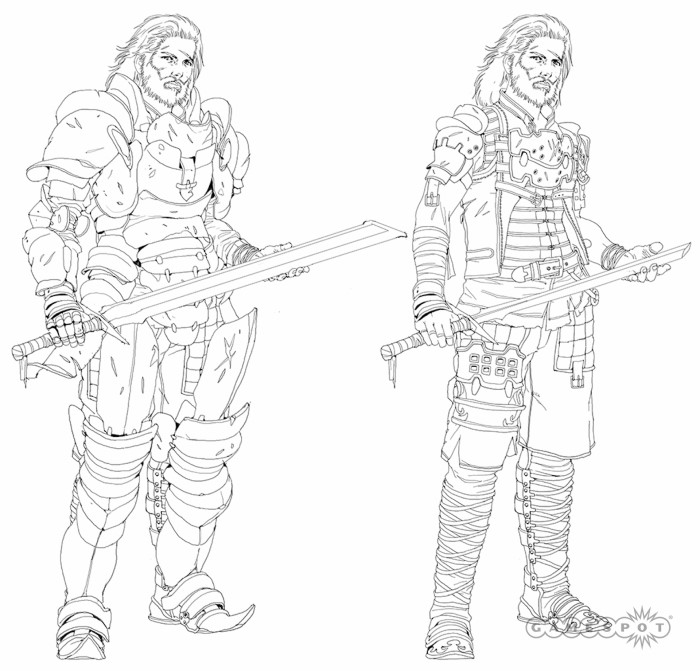
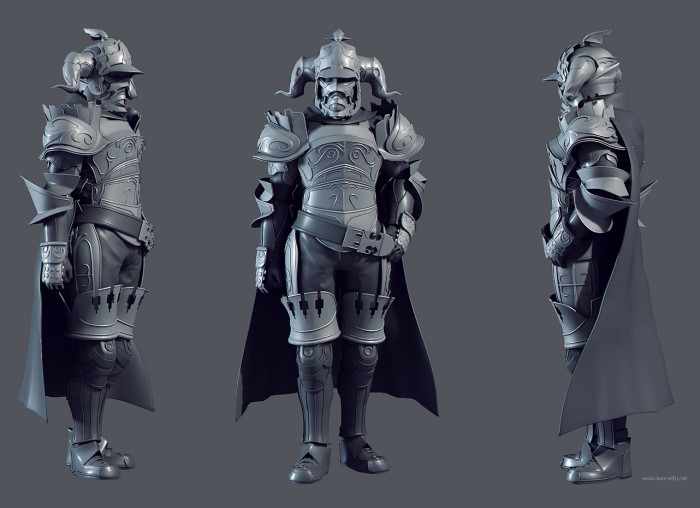
After Square expressed interest in making the game a XII spin-off, the story was reworked a little to involve Basch from XII being the main character and Ashe (also from XII) playing a major role as his biggest supporter and a fellow combatant. Other heroes from XII, such as Balthier, would gradually arrive to help defend the fortress as well. Scenario Writer Ulf Andersson stated that the story was going to be set a few years after the events of Revenant Wings.

So what happened to it? Well, Square started welshing on the deal and getting fussy.
The deal was that Square would pay Grin about $16 million in installments. The installments would be tied to milestones that the game reached, which I think is fair. Keep making progress and you keep getting paid.
Square apparently had other ideas about that deal. The first two months of development went by with no initial payment. I don't know if it's just a case of Swedes being too nice and easy going, but co-founder Bo Andersson wasn't particularly worried and brushed it off as late payments being a common industry thing (instead of, you know, telling Square to fucking pay up). Then a few more months went by without Square coughing up the money. Grin was forced to start closing all of their other offices because they were bleeding money from this project and Sweden is apparently not overly tolerant of letting businesses run under unwise debt loads.
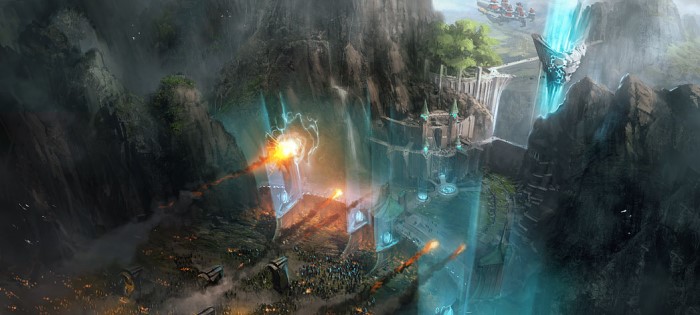
Square then started requesting Grin to send them (by fax) all of the game's assets, music, and code. That sure as hell wasn't going to fly (or in some cases, be possible), so then Square supposedly decided that they suddenly didn't like the Nordic art style of the game anymore. Grin rushed to try and "Final Fantasy" up the art, but they still weren't happy with it. Grin even claims that they once sent an image taken from FFXII itself to Square to see what they would say, and they responded that it didn't "look like Final Fantasy".
So at this point it was clear that nothing the developer did was going to please Square. Later in 2009, Square rang them up and told them that they weren't going to be getting any money, period. Grin thought about suing, but suing requires money that they simply didn't have. During Grin's bankruptcy filing, Square claimed the milestones hadn't been met, Grin claimed the opposite, one of the level designers at Grin said that the developer had been ignoring requests from Square for changes, it was a complete shit-show.
It's a lot of "he said, she said" kind of stuff, so the truth is probably somewhere in between (Grin had its share of accusations against it after all). Either way, Square basically hijacked the project (that they said they weren't interested in anymore) and passed it on to another developer to continue, but that failed too. During an interview at E3 2011, Motomu Toriyama said that the game was suspended, but that it also wasn't going to be seeing the light of day. That essentially put the headstone on Fortress' grave.
Regardless of what the real story was behind Fortress, it was definitely going to be XII's "X-2". Whether we would have looked back fondly on it or not is anyone's guess. Grin had wanted to revolutionize Final Fantasy, which is the kind of line that usually acts as a prelude of horrible things to come. On the other hand, maybe it could have been a fresh and interesting take on the Final Fantasy series, XII in particular, and the world of Ivalice as a whole. We will simply never know what could have been.
Fortress Tech Demo Footage
There is some tech demo footage out there, but that's not enough to judge one way or the other.
-Final Fantasy IV-
While FFXII was being released, getting a decent sequel, and being involved in the complete implosion of a developer halfway around the world, Square had been busy giving Final Fantasy IV its own sequel title.
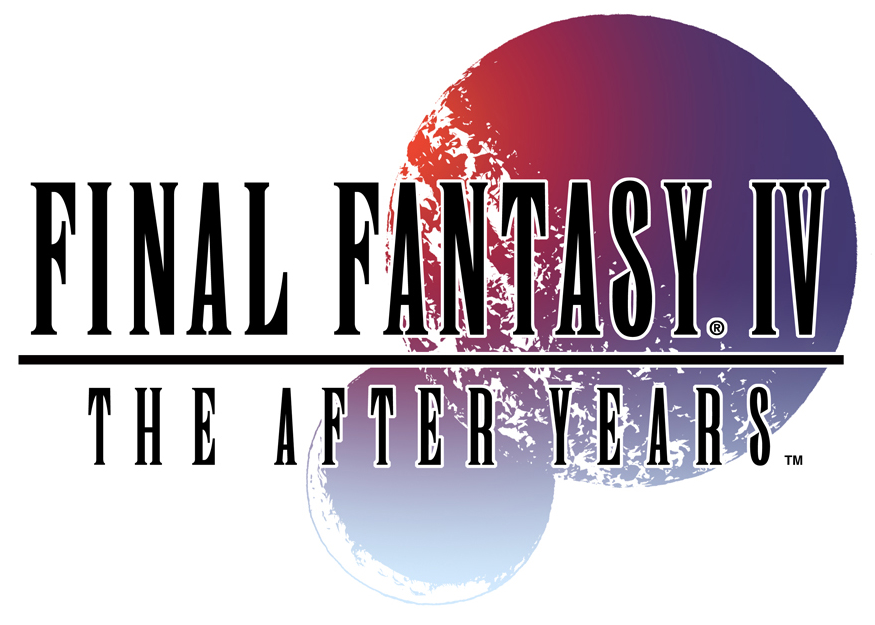
Specifically this thing. Final Fantasy IV: The After Years was released in Japan in early 2008 for cellphones. Yes, cellphones. Square had a brief stint of publishing games for particular series of phones (namely the 900i series, which got product placement in Advent Children in the form of the P900iV as part of a brand deal).
The game was originally released in 13 chapters over the course of 2008. It was later released digitally on the Wii in 9 chapters, although you can no longer get it as the Wii Shop Channel was ended. In 2011 it was included in the Final Fantasy IV Complete Collection for PSP (along with Interlude, but we'll get to that later). It was also released for modern cellphones in 2013 and PC in 2015.
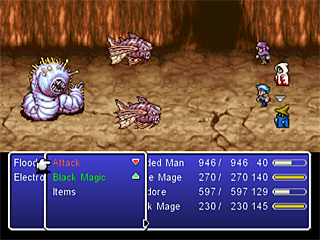
The game is set 17 years after the events of FFIV and jumps between many different characters. Original FFIV characters return and are involved in the plot, kids of those characters are involved (Cecil and Rosa's son Ceodore, Yang's daughter Ursula, Cid's grandson Mid), and some new faces are thrown in as well.
It wasn't great.
A few gameplay changes were made that people seemed to like. There was a system where certain attacks were stronger or weaker depending on the phase of the moon, there was a co-op tech system called "Bands" (think Chrono Trigger). Okay, so the Moon Phase thing is a little debatable and probably down to personal preference, but the Band System was definitely well received.
Unfortunately, there were also some gameplay elements that didn't go over so well. The encounter rate was ridiculous and the game heavily reused assets from IV. All the same items, abilities, equipment, dungeons, sprites, and spells were reused.
On top of that, the story was also heavily reused. Our old friend "bigger threat hiding in the bush" rears its ugly head again in the form of "The Creator". The Creator's thing is that he destroys races that don't evolve because he thinks the universe shouldn't be overrun with inferior species (it's a fucking universe, dude. You aren't going to overrun that). As with Advent Children and -Will-, we also get the pointless return of a threat that had been dealt with in the original game, in this case it's a second moon only this time it's closer than it was before. A mysterious girl also starts hijacking Rydia's summons somehow, but this is pretty much glossed over. It's mostly an excuse to not allow Rydia access to all of her summons right away.
In Ceodore's story, he goes on a trip to become a member of the Red Wings by passing a trial to prove his Knighthood. He has the typical "son with famous parents" hangup of having expectations of greatness weighing on him. The Red Wing fleet gets attacked and Ceodore tries to return to Baron which has fallen under attack by monsters. Cecil, Rosa, and Cid try to defend the town, but the second moon appears and a mysterious girl that looks like Rydia comes down, summons Bahamut, and beats Cecil. Mysterious girl then heads into the Eidolon realm and takes Leviathan and Asura. Ceodore and "Hooded Man" travel through Devil's Road, the waterway under Baron Castle, Mist Cave, all those good places.
Rydia's chapter involves her attempt to find out what the hell is going on with her summons and why she can't call on any of them. She later gets beaten by said Mysterious Girl and the airship her party is using gets damaged. After repairing it, Titan attacks them but is defeated by a man in dark armor. He tells them to go to the Tower of Babil before "history repeats itself" (TAY really likes to point out that it's doing the exact same shit as in IV).
Yang's chapter involves him and his daughter running into Kain Highwind who once again appears to be evil and says he's totally acting of his own free will and is in no way under any outside control. Kain swipes the Crystal and bolts. Yang and his daughter eventually team up in a fight and Yang relents in her request to train her as a monk. They hop on their now refueled ship only to be sucked into a whirlpool by Leviathan.
Palom's story involves him training Leonora, getting attacked by Mysterious Girl who is after the crystal, and then Palom petrifying himself to stop the girl from taking the crystal. Mysterious Girl ends up getting the crystal anyway.
You get the idea. The focused on character finds something strange going down in a location from IV, battles Mysterious Girl, and then either loses to her or beats her just to have her turn around and get what she wanted anyway.
The story cycles through characters (there are like 20 of them that are playable in the game) without really moving the plot forward in any way. Once the game get to the final tale (split into two parts of course, because that means more money), the party fights through a legion of boss fights until finally reaching the Creator. The Creator is the last surviving member of a species that wiped out its own civilization and he thinks that qualifies him to decide on which races are inferior or evolutionary dead ends. The party beats him, he thanks them for some reason, and then everyone goes home on the Lunar Whale and goes back to what they were doing before.
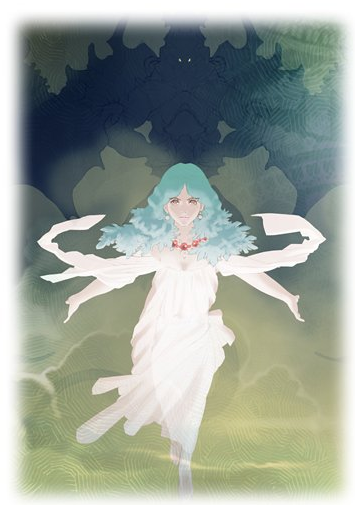
You get characters fighting their "dark halves" including Cecil (who already did that in IV), as well as Kain being a bad guy and kidnapping Rosa/the Crystals only for it to later be revealed that it wasn't the "real" Kain. The party gets the Lunar Whale and goes to the moon to beat the big bad. It's all the same stuff.
The worst part about the rehashing is that the characters actually acknowledge it in the game by saying things like "This is just like the first time". There are even flashbacks to Final Fantasy IV, as if you would be playing this game without any prior knowledge of that game.
There was also a side game called Interlude which tied IV and TAY together that released with the Complete Collection, but the game didn't really show much that TAY didn't already establish. It takes place one year after IV. The original cast investigate monsters pouring out of the Sealed Cave, accompany Rydia through the Tower of Babil, find out that Rydia is a fake at which point real Rydia shows up, then we learn that Rosa is pregnant and the mysterious girl who was impersonating Rydia proceeds to sit on her hands for 16 years.
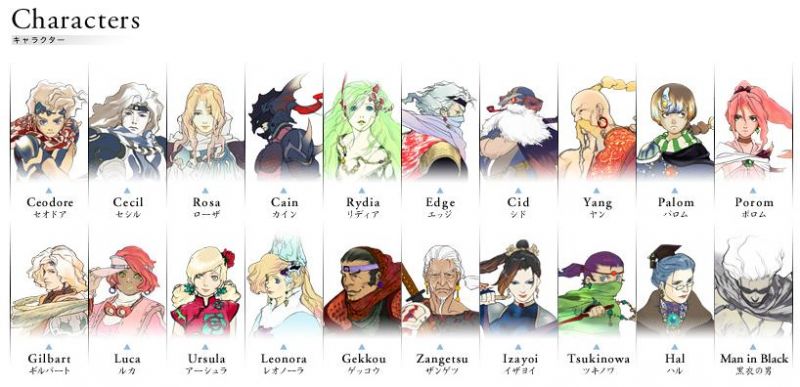
Unlike the other EU entries, I don't have much to say about Final Fantasy IV's Extended Universe. X and VII's are insultingly bad. There's a lot to discuss when it comes to those. But IV's? IV's Extended Universe is just IV told in a different order. You fight the same bosses, travel through the same dungeons, experience the same plot beats, and look at the same graphics. The plot doesn't do anything and drops anything that could prove interesting, for example nothing is explored with the "mind-controlling Eidolons" thing, and there's no connection established between Summoners and Lunarians even though a bunch of hints are dropped. On the one hand, at least TAY didn't commit any heinous offences towards the original IV (other than Ceodore being a pantywaist I guess). On the other hand, TAY didn't do anything. It just existed, and not in the way that Revenant Wings did. TAY was simply lazy, which I guess might be the point. The game was released in episodes for the cellphone. It was aimed at getting people to buy it so they could distract themselves on the train. No doubt in an effort to squeeze one more chapter out, the final dungeon of the game involves re-fighting basically every boss in existence, including ones from other FF titles, through 29 floors. Slog doesn't even begin to do it justice.
That's it, really. I didn't play through it myself, as I didn't have a Wii at the time of it's WiiWare release and I had read Mega64's LP by the time I had gotten around to replaying IV in the Complete Collection. I didn't suffer the tedious gameplay, but given how repetitious the story and dungeons were, I highly doubt I would have been able to hold on until the end.
TAY references IV so much that it winds up having no identity of its own. You aren't getting further adventures with your favorite FFIV characters. You're getting the same adventure, with the same dungeons, against the same bosses, using the same abilities, with a handful of new characters and a thinner story, for a higher price (As of writing, TAY is currently 4-5 dollars more expensive than IV on Steam).
Now that we've seen XII's failed attempt at a franchise and TAY taking cues from a recycling plant, there are two other games which follow in those same footsteps. Coming up next, The Fabula Nova Crystallis.